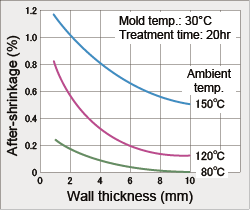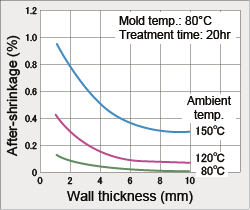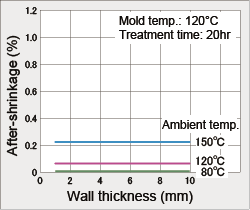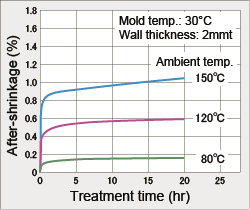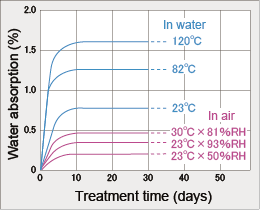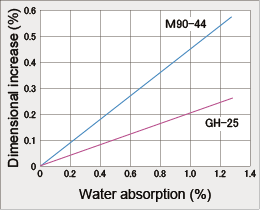Home > Technical Support > Molding Technology > Molding Technology for DURACON(R) POM
Molding Characteristics / After-shrinkage and Dimensional Change Due to Moisture Absorption
6. Molding Characteristics 6.3 After-shrinkage and Dimensional Change Due to Moisture Absorption 6.3.1 After-shrinkage and Annealing
If allowance for after-shrinkage is limited by the performance requirements of a product, mold temperature and annealing conditions should be determined in consideration of these relations. Namely, one of the following two methods must be adopted:
The purpose of annealing is to relieve residual stress and to improve dimensional stability as described above. With general purpose moldings, annealing is rarely applied. When aiming to eliminate residual stress through annealing, the following points apply:
6.3.2 Dimensional Change Due to Moisture Absorption
|


